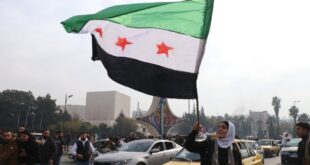European officials are shocked by the visit of China’s President Xi Jinping to Italy, which joined the “One Belt, One Road” initiative and is ready to improve matters in her economy, almost completely opening it to Beijing.
Half a year ago, it seemed that from the economic point of view, the capitals of the Old World were playing in the same team as Beijing and Washington. After all, they, in the same way, came under the rink of American steel and aluminum duties, as did China. Then this protectionist decision of Donald Trump was equally condemned in Brussels and in Beijing. The Europeans even (an unthinkable case) introduced their own trade counter-sanctions against the United States.
However, the Chinese story is completely different. Trump immediately made it clear that Europe was not his main goal, and began to introduce massive trade duties on Chinese imports. Thus began the trade war, in which Washington and Beijing have not yet fired each other on the last, decisive economic shell.
Against this background, with new intentions about cooperation in Europe, China has welcomed, continuing the line of opposition to US measures. But the Europeans quickly realized that the support of toxic Beijing would benefit him alone. Thus, the position on China in Europe surprisingly begins to coincide with the position of the United States. Moreover, European functionaries no longer hesitate to condemn China for its policy of economic advancement to the west. Who is right in this game of market economies, and is the Celestial Empire dangerous?
Open arms of Italy
The greatest shock to a number of inhabitants of the cozy Brussels cabinets was caused by the recent visit of the head of China, Xi Jinping, to Italy. By itself, it was supposed to be good news for Europe, after all, Comrade C brought to Rome projects of beneficial cooperation, which other European countries could join.
The main achievement of the visit of the Chinese leader to Italy is the signing of a joint memorandum of support for the initiative “One Belt, One Road” or the so-called project of the New Silk Road. Within its framework, Beijing is creating an infrastructure that should link China with trading partners in Eurasia. The project is planned to invest an astronomical amount of 1.2 trillion dollars.
Also, China and Italy signed 29 deals totaling $ 2.8 billion for projects in agriculture, finance and energy. Rome agreed to further open access for Chinese companies to the Italian market, and Beijing – to its own for the Italian.
Populists who came to power in Italy, led by Giuseppe Conte, plan to extract huge profits from the projects, and at the same time improve the affairs of the national economy. That is why, against the background of EU concerns about the rapprochement with China, the Italians, apparently, do not even blink an eye in a situation when it will be necessary to sacrifice European solidarity for this.
As if anticipating criticism from EU partners, Italian Prime Conte was quick to assure that Italy would not turn into a “Chinese vassal” and would not become Beijing’s obedient tool in Europe.
For Italy, the question of foreign investment is still very acute. And no one except China is able to provide them in due measure. Especially when there is an infrastructure crisis in the country. Let us recall at least the collapse of the bridge in Genoa last August, when it became obvious to everyone that a lot of engineering structures in Italy — bridges, roads, and so on — need urgent repair. There is no money for infrastructure rehabilitation in the country’s budget.
A year ago, after Euroskeptics won the elections, Italian government bonds showed a record collapse in their history with an increase in yield over 100 bp. per day. These values then hit the highs of 2012 and provoked a blow to the entire European stock market.
Without going into economic details, let’s say that this is a sign of a severe crisis in the face of difficulties in attracting external borrowings. The EU then saw a way out for the Italians to tighten their belts. But after all, Euroskeptics did not then win the election, in order to betray their electorate, ordinary Italians, by taking unpopular measures. Thus began the smoldering conflict of Brussels and Rome, not wishing to cut budget spending.
China, on the other hand, promised billions in investment in the repair of Italian ports. First and foremost, the ports of Genoa, Palermo, Ravenna and Trieste will be updated. That is why Chinese investment is manna from heaven for Italy.
Chinese conquest of Europe
European Commissioner for Budget Günther Oettinger criticized China’s expansion in Europe. He said that the EU should get the right to block Beijing’s infrastructure projects in the Old World if they do not meet the interests of all EU countries.
Ettinger is very worried by the fact that large energy and transport infrastructure facilities are not sold to European companies, but to Chinese ones. Although how could it be otherwise, when Chinese investors have money for this, and these facilities are needed for “One belt, one road”.
Europe begins to lose its economy to China, getting into serious debts to the Chinese and losing assets.
New ties between China and Italy have been criticized by former Italian Prime Minister Paolo Gentiloni. According to him, Europe demonstrates an amazing lack of unity, and Beijing is advancing on Europe with its technologies.
New Silk Road
The name of the project was given in honor of the ancient Silk Road – the caravan route connecting China and Europe through Central Asia. This path operated from the II century BC. e. XV century. No matter what they say in Europe about the Chinese project, there is no alternative to it. And who said that this would be a Chinese project? The route of the new Silk Road goes in different directions, connecting Asia and Europe, and this project is truly multi-polar.
It is planned to build three railway corridors: the northern, central and southern. The northern corridor will go through Kazakhstan and Russia to the Baltic countries, its western branch – through Belarus and Poland to Germany and the Netherlands. The central corridor connects East China, its ports of Shanghai and Lianyungang with Central Asia: Kirghizia, Uzbekistan, and Turkmenistan. Next – with Iran, Turkey, and then pass through the Balkans to the ports of France. To implement this route, a tunnel under the Bosphorus can even be built.
The southern branch of the Silk Road will go from China to Bangladesh, India, Pakistan, and then to other countries in Asia, the Middle East and Africa.
Thus, at a certain stage, the project “One Belt, One Road” will become a large part of the infrastructure of the participating countries and those interested in its development, that is, it will be Kazakh, Turkish, Russian, Central Asian, and Balkan. And, finally, European.
China does not postpone business at all and quickly implements infrastructure projects. And this is true, because most often the problem is in financing, and Beijing has money.
 Geostrategic Media Political Commentary, Analysis, Security, Defense
Geostrategic Media Political Commentary, Analysis, Security, Defense





